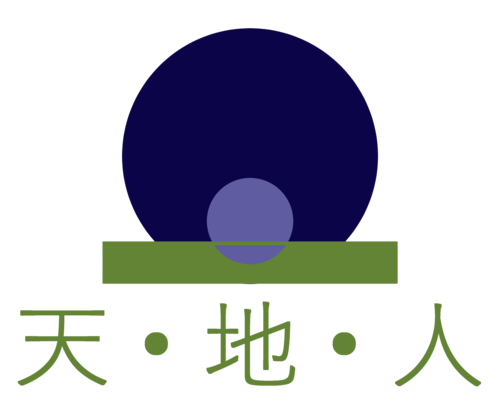"As above, So Below" : The Five Element Model
The five element model is the ancient Chinese way of understanding the closeness and importance of the Universe in accordance to our body's rhythm. These traditional people lived in the elements, they depended on the cycle of the seasons and survived according to the laws of the Universe.
The Five elements are wood, fire, earth, metal and water. These Elements can be used as an analogy that aids in the unification of the human being. Just as nature cycles through a natural process of change ancient traditional people instinctively knew that the elements lived within them-- that nature inside of them followed the same seasonal patterns and cycles that existed in the external world.
"We are the seasons! We are the Elements!"
We are the mini replica of the greater Universe passing from season to season in the natural and unending cycle of life. Philosophers looked to nature and saw that the season like the growth and development in humans, progressed in an orderly cycle. Change in other words was not a random act but an orderly process-- an evolution if you will.
Organs, Symptoms & Emotions
Each element is said to relate to an organ, a season, a sounds, a color, a meridian of Qi and anything else involved in the cycle of nature. Having all the elements in harmony within the body means feeling your best -- physically, mentally and emotionally.
The water element relates to the kidneys and bladder. The kidneys are said to house our "life essence". This is our fundamental strength, our bones, our deep power and will to survive. It corresponds to the winter. The Wood element organs are the liver and gallbladder. They help our bodies to detox and cleanse the blood. This element relates to spring, the time of new beginnings and "spring cleaning".
The fire element is represented by the Heart. The function being to circulate blood and warmth, sorting the 'pure' from the 'impure'; as well as our deep sense of joyfulness (the heart is also said to house the 'shen', an aspect known as the "twinkle in someones eye"). Seasonally, it corresponds to summer, when plants flourish, nature matures and begins to bear fruit. The fire element is a time of transformation.
Earth holds us and supports us, much like the spleen and stomach do in the body. It is in these organs that we receive and convert nourishment into usable energy. The season represented by the Earth element is late summer, a time when we bring in the harvest, savor its flavor and reflect on the year's growth. Finally the metal element governs the large intestines and the Lungs. Corresponding to the fall season, this is where the intestines let go of what our bodies no longer need. The Lungs bring in the inspiration of breath, infusing us with air which is later converted to Qi.
Each organ when dis-eased has its own symptomatology. The heart manifests in belching, the lungs in coughing, the liver in talkativeness, the spleen in acid regurgitation, the kidneys in yawning and sneezing. When the heart is overly abundant in happiness it manifests as giggling which can turn to hysteria if not kept in check. When the lungs energy is consuming it tends toward grief and crying. When the liver is overly active it effects the spleen and there is an excess of worrying. If the liver is overactive expect a lot of anger outbursts to arise. Finally when the overactive spleen effects the kidneys it leads to a great deal of fear. These are known as the Seven Emotions more on this in a later post.
Wood: Liver, Blood, Wind, non corporeal soul and human kindness.
Fire: Heart, warmth, elation, heart, spirit and propriety.
Earth: Spleen, Qi, dampness, worry, consciousness of possibilities and faithfulness.
Metal: Lung, Fluids, dryness, corporeal soul, righteousness.
Water: Kidney, Essence, cold, fear, and our general will.
These are some more characteristics that describe the five element theory in Traditional Chinese medicine.
There are two ways to analyze this model. One being the Mutual Production Sequence and the other the Mutual Control Sequence.
Mutual Production Sequence
In the Mutual Production sequence the elements are placed in order by "season;" Spring (Wood), Summer (Fire), Late Summer (Earth), Fall (Metal), Winter (Water). It is where the producer would be called the "Mother" and whats produced is the "child". The child of a deficient mother becomes deficient for want of nourishment. When a child is deficient it "steals the qi" of the mother, making it deficient too. Simply put, if an organ is deficient therefore treating the mother organ and strengthening her can help the deficient organ. For example, if the kidneys are deficient strengthening her "mother" organ the lungs will help strengthen and nourish the kidneys. But just as there is a mother organ there is also an attacker organ this is where the mutual control sequence to the five element model comes in.
Mutual Control Sequence
This way of analyzing the model is designed to describe the naturally occurring phenomena and it works to ensure that the production order doesn't over generate and cause imbalances.
Heart ATTACKS the Lungs: Causing frequent urination, palpitations, insomnia and shortness of breath.
Lungs ATTACK the Liver: Showing signs of bitter taste in the mouth, cough, irritability and a wiry pulse.
Liver ATTACKS the Spleen: Causing painful flanks, headaches, sore eyes, passing gas, lack of appetite, deficient Spleen.
Spleen ATTACKS the Kidneys: Leads to dry mouth and lips, thin, rapid pulse, constipation, edema, other deficient kidney signs.
Kidneys ATTACK the Heart: Causing irritability, insomnia, red tongue, thin and rapid pulse.
The five element model can be used to look at our lives and ask meaningful questions of these elements which may help us to see what could move more smoothly in our life. Understanding what might be ‘stuck’, we can apply a treatment to promote smooth flow, a balance to health.



